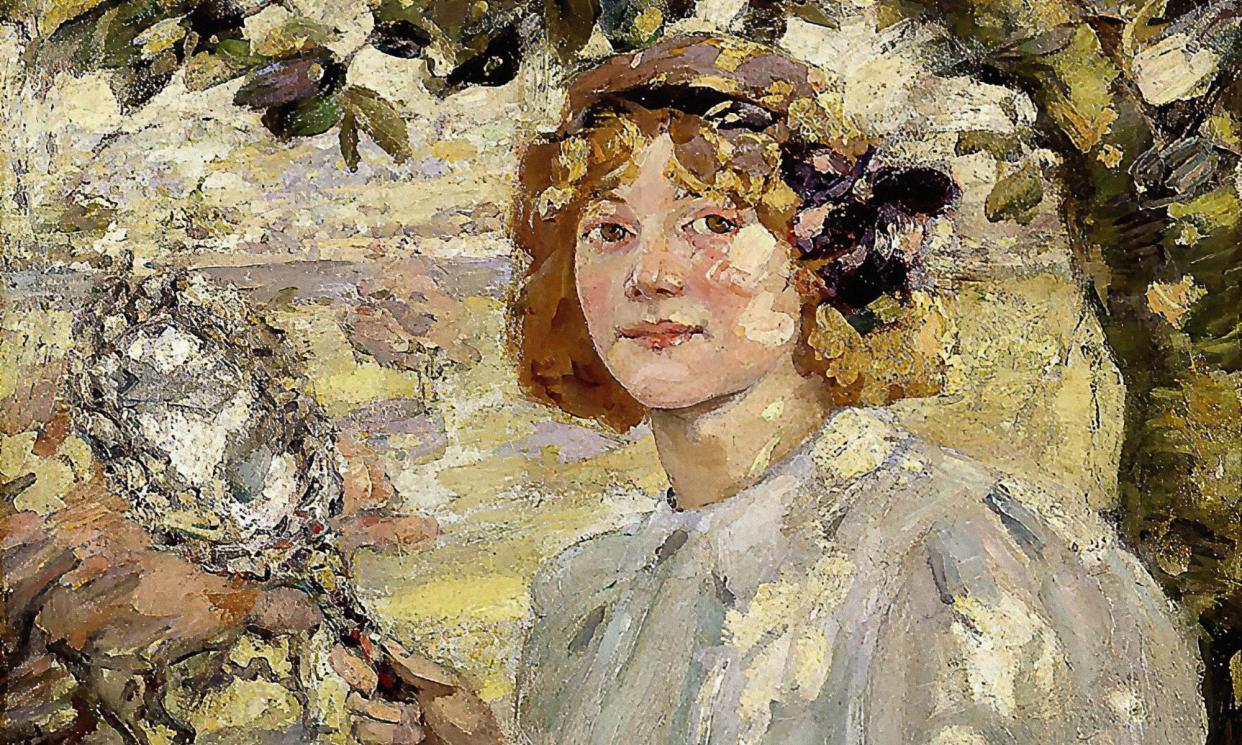Sunbonnet supernova: the ‘fun gal’ who put the glorious Glasgow Boys in the shade

About 15 years ago, I was being shown around Glasgow’s Kelvingrove Art Gallery by an eminent art historian. When we got to the section on the Glasgow Boys – James Guthrie, John Lavery et al, late 19th-century pioneers of the school of naturalistic, plein air painting – I asked a question: where were the Glasgow Girls? The historian practically laughed in my face: didn’t I realise that the Glasgow Boys was an art movement? And they were all men: there were no women.
Today, no one doubts the existence of the Glasgow Girls. A few days ago, the National Galleries of Scotland in Edinburgh took possession of one of the loveliest works of the women who worked alongside the men at the Glasgow School of Art in the final years of the 19th century.
Bessie MacNicol’s The Lilac Sunbonnet (1899) is a light-drenched, joy-filled painting of a girl in the countryside; its deft brushstrokes perfectly capture the dappled rays of sun. Indeed, the work is infused with all that was best in the movement that ushered Scottish painting into the modernist era. It’s now clear that many of the Glasgow Girls were at least as good as the Boys, and some of them were even better.
Today the Kelvingrove fittingly boasts the best collection anywhere of the Glasgow Boys: 55 paintings, plus one by their inspiration, the American James McNeill Whistler. By contrast, the Glasgow Girls are represented by just six paintings; two of these, A Girl of the Sixties and Under the Apple Tree, by MacNicol.
The problem, where the Glasgow Girls are concerned, is the same issue curators across the world are facing when it comes to redressing the gender imbalance on their walls. It’s one thing knowing the women were there and painting, but quite another trying to track down their work. Much of MacNicol’s work is in private collections; the acquisition of The Lilac Sunbonnet came about due to a rare instance of her work coming to market.
MacNicol attended the Glasgow School of Art for five years from 1887 when she was 18. She was a contemporary there of the MacDonald sisters, as well as Jessie Keppie and Katherine Cameron. They, like the Boys, studied under the groundbreaking directorship of Fra Newbery – but he wasn’t quite groundbreaking enough to allow female students to paint male nudes from life. To gain experience of that, MacNicol had to go to Paris, where in 1892 she signed up at the Académie Colarossi.
The school was one of the first to allow women to paint alongside men – but at a price, since they were charged 100 francs a month, twice the fees for their male counterparts. They also had to survive the eccentric Colarossi tradition, whereby the naked male models would skip across the studio before adopting their pose – a practice that had some female students retching at the sight.
MacNicol, by all accounts, would have been unfazed: she sounds to have been a fun gal, prone to breaking into a little jig when something took her fancy. She loved music, cycling and fashion, which is what led curator Charlotte Topsfield of the National Galleries of Scotland to suggest recently that the Girl in the Lilac Sunbonnet almost certainly references a novel of the same name by Samuel Rutherford Crockett, which was a massive bestseller at the time, and a fashion influencer.
Not yet 30 when she painted The Lilac Sunbonnet, MacNicol should have had a long and successful career ahead. Instead, tragically, she was to die from pre-eclampsia during her first pregnancy, aged 34. Her child also died.
A later director of the National Galleries of Scotland, James Caw, would in 1908 describe MacNicol as probably the most accomplished artist her country had ever produced. The Kelvingrove also has a self-portrait: it’s much darker than the sunbonnet painting, and in it MacNicol is unsmiling and serious-looking. She looks as though she wants to tell us something – perhaps we’re still trying to work out what it is.


